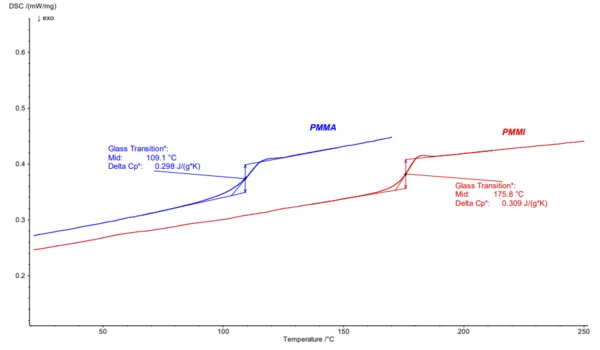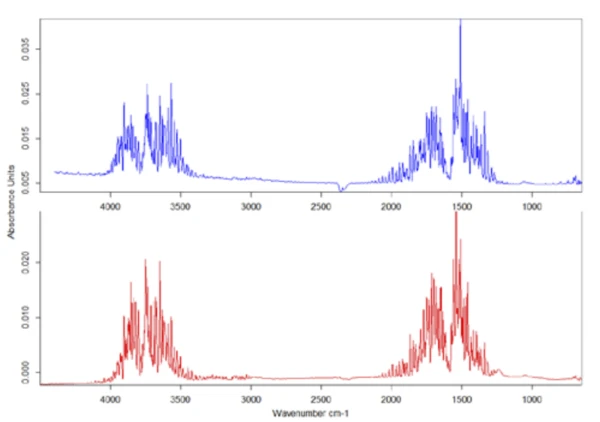
23.03.2020 by Milena Riedl
Discover Everything about Your Material: Comprehensive Study on PMMI
PMMI (Polymethacrylmethylimide) is a thermoplastic polymer. As it is an amorphous polymer, it features high transparency. The case study describes how thermal analysis methods can be employed to discover everything about the material.
PMMI (Polymethacrylmethylimide) is a thermoplastic polymer. As it is an amorphous polymer, it features high transparency. Therefore, it can be used in specific applications such as the automotive industry for headlight modules, or more generically for optical components like light guides, lenses, fiber optics, luminaire covers, sight glasses and cover lenses. Methods of thermal analysis are widely used in the field of polymers to characterize and identify materials. In this case study, PMMI was investigated by means of DSC, TGA and TGA-FT-IR. Key results include:
- PMMI has a higher heat deflection temperature, which is also reflected by the higher Température de Transition VitreuseThe glass transition is one of the most important properties of amorphous and semi-crystalline materials, e.g., inorganic glasses, amorphous metals, polymers, pharmaceuticals and food ingredients, etc., and describes the temperature region where the mechanical properties of the materials change from hard and brittle to more soft, deformable or rubbery.glass transition temperature (Tg) as compared to PMMA.

- In the first heating curve of the DSC experiment, one can observe – besides the Température de Transition VitreuseThe glass transition is one of the most important properties of amorphous and semi-crystalline materials, e.g., inorganic glasses, amorphous metals, polymers, pharmaceuticals and food ingredients, etc., and describes the temperature region where the mechanical properties of the materials change from hard and brittle to more soft, deformable or rubbery.glass transition Tg at 162.2°C – also an endothermic effect at 197.1°C directly following the Tg. As this effect is not seen in the second heating, it can be assumed that it may be an evaporation effect of a volatile component, which was further investigated with thermogravimetric analysis (TGA).
- By means of TGA, one can quantify the mass loss at a certain temperature. It would further be of greater interest to learn what gas evolved during this mass-loss step, in order to gain deeper insight into the composition of the sample. To detect and identify the evolved gas, the TGA system was coupled to an FT-IR spectrometer.

Read the full paper on the comprehensive study on PMMI here!